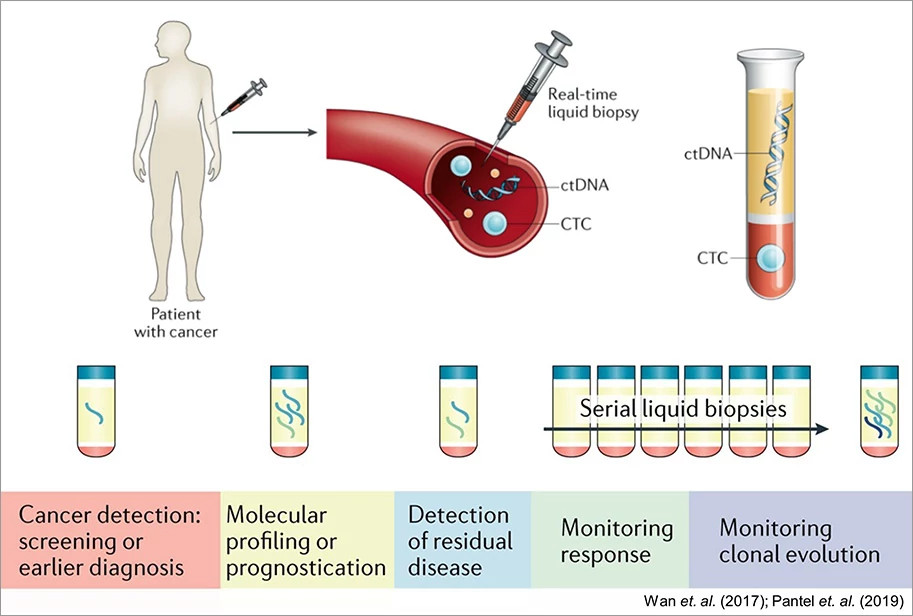The Center for Early Detection and Interception of Blood Cancers at Dana-Farber Cancer Institute is a one-of-a-kind, comprehensive, and multidisciplinary clinic dedicated to patients with blood cancer precursor conditions, allowing us to offer patients a state-of-the-art risk assessment and therapeutic interventions that may reduce their risk of progression to overt blood cancer. In addition to innovative clinical services, the Center focuses on laboratory research and translating its findings into the clinic.
Monoclonal gammopathy of undetermined significance (MGUS) and smoldering multiple myeloma (SMM) are precursor plasma cell disorders that carry a variable risk of progression to symptomatic multiple myeloma (MM). While the initial diagnosis of MGUS or SMM is usually an incidental process that relies on the identification of increased monoclonal protein in the blood, bone marrow biopsy is the gold standard for diagnosis and monitoring of progression to MM. However, bone marrow biopsies are intrusive and painful procedures for patients with an asymptomatic condition and do not allow for samples to be collected frequently during the course of disease development to monitor tumor dynamics over time. Additionally, some clinical tests – like FISH (fluorescent in situ hybridization), which is used to assess tumor cytogenetics – have low diagnostic yields, especially in precursor conditions where there are fewer tumor cells present.
Liquid biopsies, another term for blood tests, provide a potential alternative that could be used for more frequent follow-up and may even provide more comprehensive data than bone marrow testing. Researchers at Dana-Farber are working to analyze blood with single-cell RNA sequencing, which measures gene expression in individual cells from a sample of tumor or immune cells. We hope to gain a deep understanding of precursor disease biology and risk stratification with the molecular fingerprints this data provides.
Circulating tumor cells, or cancer cells found outside the bone marrow in the blood, may provide information for the non-invasive surveillance of precursor conditions and identify new blood-based biomarkers to identify which patients are at highest risk of disease progression. We recently analyzed paired blood and bone marrow samples from 73 individuals, including patients with MGUS, SMM, newly diagnosed myeloma, and healthy individuals using single-cell RNA sequencing, for a total of 351,225 tumor cells from bone marrow and 55,110 circulating tumor cells from blood. The number of circulating tumor cells increased as disease stage increased, which is similar to the increasing amount of tumor cells found in the bone marrow. We found that RNA sequencing of circulating tumor cells can provide more cytogenetic results than FISH in some patients. Work continues to identify ‘signatures’ in this data that define high-risk early disease.
Additionally, past studies have suggested that the immune system is already changed in patients with MGUS, but it is unclear how those changes compare to SMM and precisely which immune changes are related to disease. We analyzed RNA sequencing results from blood and bone marrow immune cells from almost 400 individuals. We found that despite their early disease stage, patients with MGUS presented extensive immune dysregulation compared to healthy individuals, suggesting that compositional changes may be established early on and that changes in gene expression and functionality may underlie progression. We were able to comprehensively map changes in the bone marrow immune cell composition in patients with MGUS, identify cell subpopulations that are more likely to interact directly with tumor cells in the bone marrow, and describe immune hallmarks of disease.
The members of our Center continue to work diligently to translate these results to the clinic, where they can best serve our patients.
